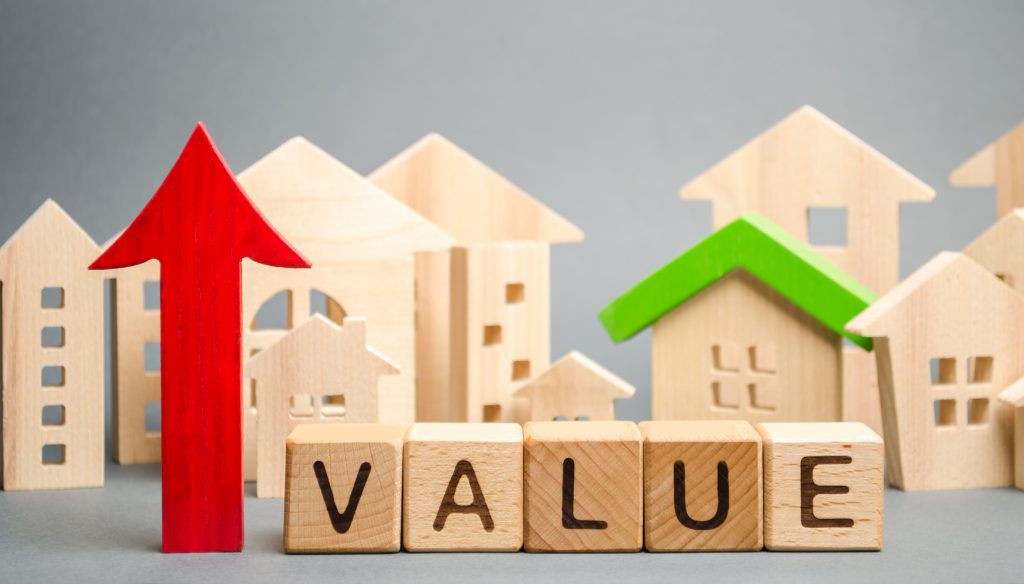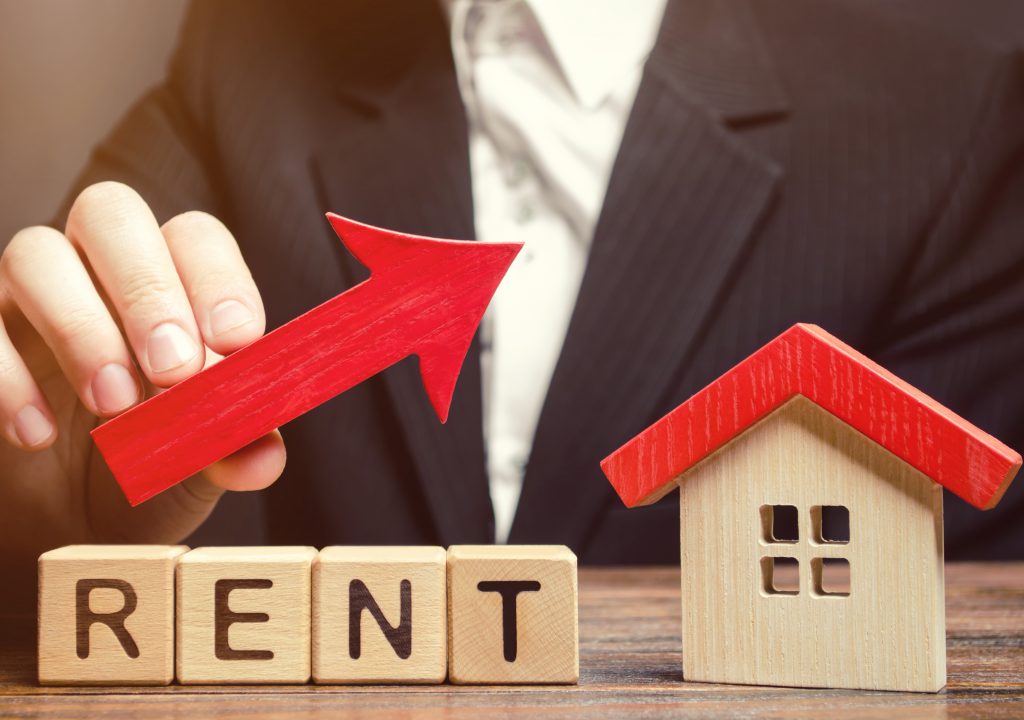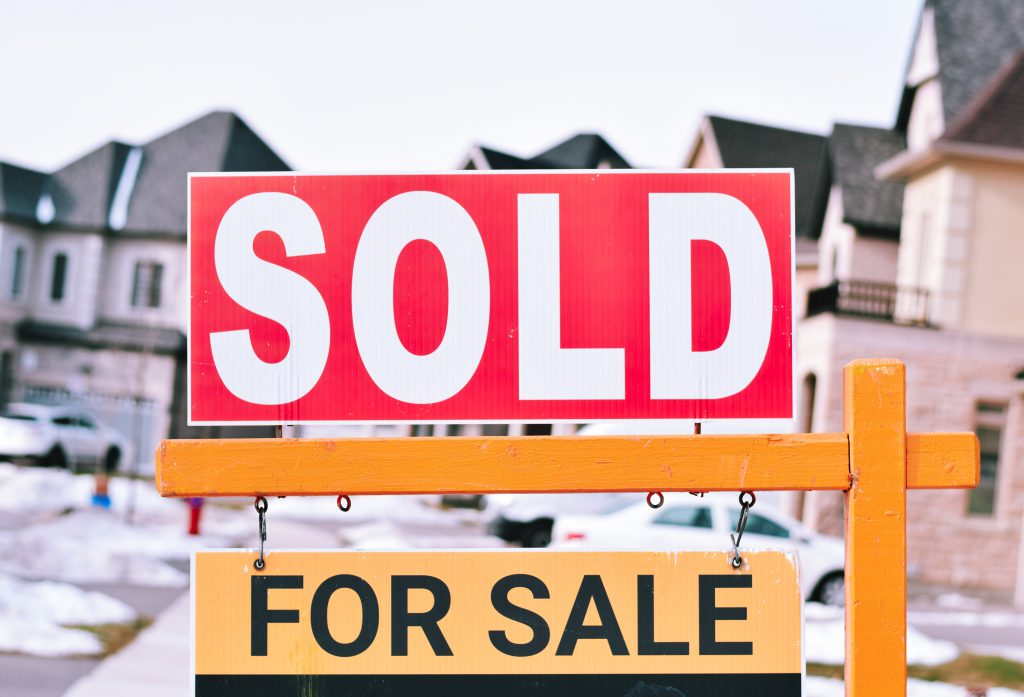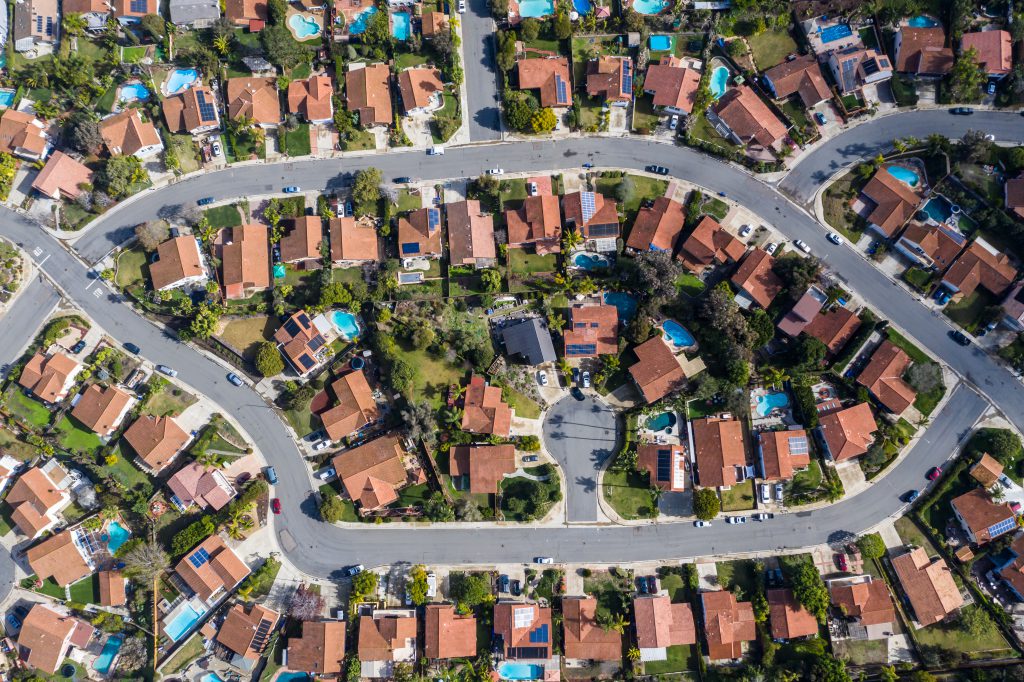
Introduction
The rise in the cost of housing has many Americans worried. As housing consumes an increasing percentage of a household’s income, other areas of individual and family lives are negatively affected. The effects of less money for necessities and extras will grow as more and more households become cost-burdened. Let’s examine the state of the housing market and what the effects of high household costs are.
Rent Rates

Renters see no relief on the horizon as average rates continue to rise. While rates dropped slightly over the last year for 0- and three-bedroom apartments, national average rent went up from 2020-2021 for one-and two-bedroom apartments. In June 2021, the numbers for apartments showed the rents changes overall were:
- 0-BR: $1,641 (+0.6% from prior month / -3.1% year-over-year)
- 1-BR: $1,711 (+2.9% from prior month / +5.2% year-over-year)
- 2-BR: $1,972 (+1.9% from prior month / +4.8% year-over-year)
- 3-BR: $2,012 (-2.8% from prior month / -1.4% year-over-year)
Rent varies widely per city, even in the highest top ten. Washington, D.C. has the highest average rent in the United States, $2,324 a month for a one-bedroom apartment. D.C. has the highest median household income at $85,203 a year, so it’s no surprise that rent follows suit. In states with higher incomes, rent is usually higher.
The 10 states with the highest average rent are:
- Hawaii ($1,617)
- California ($1,503)
- Maryland ($1,392)
- New Jersey ($1,334)
- Massachusetts ($1,282)
- New York ($1,280)
- Colorado ($1,271)
- Washington ($1,258)
- Alaska ($1,244)
- Virginia ($1,234)
The lowest five states are:
- West Virginia ($628)
- Montana ($678)
- Oklahoma ($699)
- Wyoming ($706)
- Kansas ($713)
Some large cities saw decreases in rent during 2020, including New York City (-21%), Seattle (-20%), and Boston (-19%). Others saw increases, such as Boise (+12%), Fresno (+11%), and Gilbert (+8%), reflecting the trend of people leaving big cities.
Increases over the past year aren’t consistent across the board. However, if we step back and look at the last decade, rental prices for apartments have risen by 32% in nominal dollars since 2010, up to $1,400 per month. The average rent for houses and apartments has increased by more than 30% over the last decade, with some areas growing far more than that. Washington and Oregon saw their average rents increase by nearly 74% and 67%, respectively (ibid.).
Buying a House

In the last year and a half, home prices have risen to record highs. To illustrate the dramatic rise, the average cost of a home in Kauai, Maui, and Oahu hit the million-dollar mark this year! (Just in case you’re wondering, that’s $5,258 a month with 20% down at 3.12% interest on a 30-year loan!)
While prices have skyrocketed in the last year and a half, let’s back up 20 years and see just how fast prices have risen. The average home price in December 2000 was $139,613.38. In December 2010, the average home price was $174,684.92. Jump to December 2020, and the average home price had increased to $300,717.57, a 72% increase in just ten years! By July 2021, the price had jumped to $385,000 for active listings!
A recent slowdown (summer 2021) is finally giving buyers slim hope for the future. This dramatic increase has many worried about the impact that high housing prices will have on a population that has seen average wages increase from only $30,846.09 in 2000 to $39,959.30 in 2010 (a 29.5% increase) to $51,168 in 2020 (a 28% increase). While housing may be slowing down, that doesn’t mean prices are dropping everywhere. In fact, the market continues to rise, albeit more slowly than in the last 18 months.
How many Americans will be able to afford a house next year, in five years, and beyond, remains to be seen. The Covid pandemic decreased homeownership rates by 2.5%, from 67.9% in the second quarter of 2020 to 65.4% in the second quarter of 2021. If rates continue to drop that quickly, America could return to its low homeownership rates of 60% in 1956 or keep sliding to or below 43.6% in 1940! Let’s hope this doesn’t happen. Either the price of homes needs to drop, financing options need to change, or incomes need to match the cost of homeownership.
The Rise in Cost-Burdened Home Owners and Tenants

The federal government defines affordable housing as “any housing unit whose gross monthly costs, including utilities, are equal to no more than 30% of a household’s gross monthly income.” Cost-burdened renters pay more than 30% of their income on rent. Severely cost-burdened spend more than 50% of their income on rent.
Before the pandemic, about a third of U.S. housing units were considered cost-burdened. In 2019, 37.1 million households were “housing cost burdened,” equating to 30.2% of all households nationwide. One in seven households-17.6 million-were “severely cost burdened.”
According to the State of the Nation’s Housing 2021 report by Harvard University’s Joint Center For Housing Studies, “Many households that fell behind on their housing payments in 2020 were already cost burdened. Nearly half of all renter households (20.4 million) and a fifth of homeowner households (16.7 million) spent more than 30% of their incomes on housing in 2019. Of these households, 17.6 million spent more than 50% of their incomes on housing!”
When numbers come out for 2020, they’re sure to be even higher!
The pandemic hasn’t helped cost-burdened households. At the beginning of 2021, nearly a quarter of low-income renters and homeowners were behind on housing payments (ibid.) In the first quarter of 2021, of those in the $25,000-34,999 income range, 19% were behind on housing payments; in the $35,000-44,999 range, 16% were behind; and in the $50,000-74,999 income range, 11% were behind.
It seems overly optimistic to think that the increase in home prices and rent will have a positive result over the next year and beyond. Indeed, change needs to come; the sooner, the better.
California

What are the long-term effects of high housing costs over the long term? Let’s focus on California, the state with the second-highest cost of housing in the United States (behind Hawaii). Housing prices have been high in California for some time, drawing further away from the rest of the nation in the seventies. By 2015, the average California home prices were two-and-a-half times higher than the average national home prices (ibid.)! How high has the cost of housing risen in the last few years? How is this affecting the population?
First, let’s look at the cost of a home loan. The median home price in California was $666,320 in July 2020 and up to $811,170 in July 2021, a 21.7% increase! The median household income was $75,235 in 2019 (the latest year that figures are available). Let’s assume that the median household income in California is $78,996.75 in July 2021 (an increase of five percent, $3,761.75). If we stick to the max income-to-housing cost number of 30% of monthly income, we get $1,975.92 for a monthly payment (this doesn’t consider the costs of owning a home, such as taxes and upkeep). Monthly payments on an $811,170 home with a 2.9% interest rate would be $3,376.33 a month, 171% of the max recommended amount of 30% of gross income.
What about renting? If we take the median income of $78,996.75 again and find the 30% max monthly payment, we’re looking at $1,975.92 per month. The median monthly gross residential rent in California was $1,657 in 2019, the latest year for which numbers are available. Let’s raise that by five percent, or $82.85, to $1,739.85 for an estimated 2020 max rental-payment-per-month rate. The median rent in California was $1,614 in 2019. Raise this by five percent for 2020 (an $80.70 increase), and we’ll assume the median rent in California in 2020 was around $1,694.70. These numbers are more promising. However, keep in mind that these are the median figures, meaning some renters will find lower rents, but many other renters have a higher rental burden.
Californians are tired of the high cost of living, including the seemingly unsustainable cost of housing. From July 1, 2019, to July 1, 2020, the state’s population increased by 0.05%, yet it’s estimated that 135,600 more people left the state during that period. The cost of housing (combined with other factors) is driving people out of the state.
Effects of High Housing Costs
When faced with high housing costs, a 2015 report by the Legislative Analyst’s Office of California lists five trade-offs that households make:
- Spending a larger share of income on housing
- Postponing or foregoing homeownership
- Living in more crowded housing
- Commuting further to work each day
- Choosing to work and live elsewhere
All five of these trade-offs have unpleasant side effects, such as
- Less money to cover transportation, food, education, entertainment, and healthcare;
- Lower homeownership rates;
- Unsanitary conditions that can negatively affect mental health;
- Elevated pollution;
- Increases in homelessness;
- Loss of skilled labor due to an exodus from crowded areas.
Solving the Housing Shortage

We won’t go into depth here on how to solve the housing shortage, but there are several things the government could do to ease the crisis.
- Build more manufactured homes and other cheaper housing
- Tax incentives
- Address the skilled labor deficit
- Make it more affordable to build (e.g., lower tariffs, tax breaks for builders, etc.)
- Ease permit and zoning laws
See our article, “Solving the Housing Supply Shortage“, in our In the Weeds blog for details on solutions and more ideas for how to solve the housing shortage (and thus, help lower housing costs)!
Summary
The housing crisis in the U.S. is a complicated issue. The rise in housing costs harms many who are already struggling. Being educated on the state of the housing market is a necessity for real estate professionals, homeowners, and potential buyers. Policymakers must have a clear understanding of the results of the increase in the housing market. Surely, with education and determination, they can change the course of housing costs in the future for this generation, as well as for generations to come.
Leave a Reply